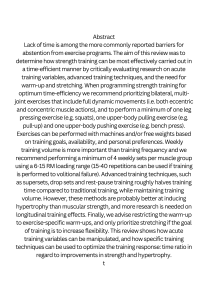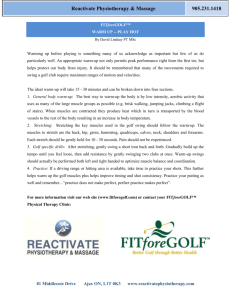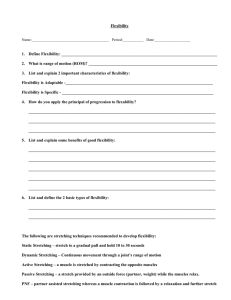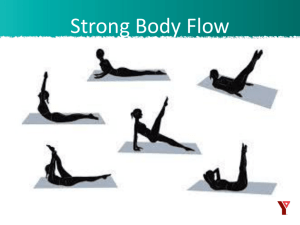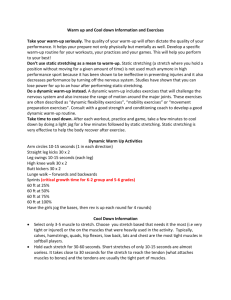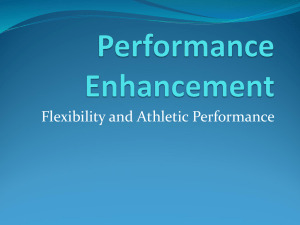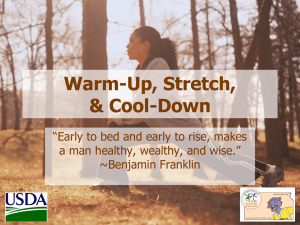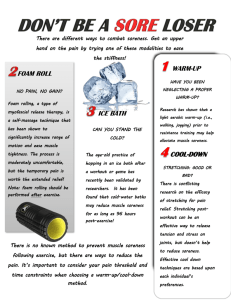Chapter 6 Muscular Flexibility Assessment and Prescription
advertisement
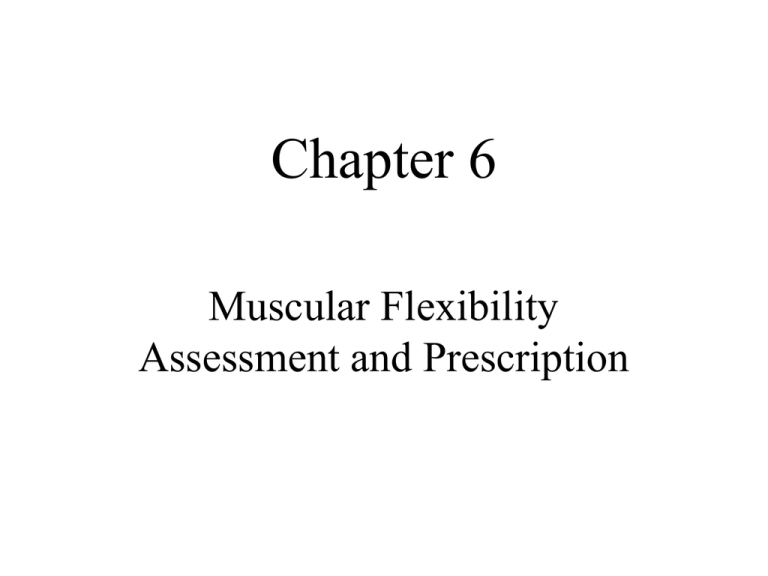
Chapter 6 Muscular Flexibility Assessment and Prescription General Information • Flexibility=The ability of a joint to move freely through its full range of motion • Most people either don’t stretch or stretch improperly • Decreased flexibility = poor posture, aches, pains, limited joint movement • 80% low back pain flexibility related • Billions of dollars a year lost in work productivity Factors Affecting Flexibility • • • • • • • • • • • • Genetic Physical activity Joint structure Ligaments Tendons Muscles Skin Previous injury Adipose tissue Body temperature Age gender Factors Affecting Flexibility • Plastic Elongation = permanent lengthening of soft tissue • Elastic Elongation = temporary lengthening of soft tissue Factors Affecting Flexibility • • • • • Muscle temperature changes (+/-) 20% Proper warm-up = increased flexibility Adipose increases resistance to movement Women more flexible than men Low flexibility – Sedentary living – Lack of exercise – Injury scar tissue Assessment of Flexibility • • • • Most are specific to certain sport Sit-and-Reach best for overall flexibility Perform test using Fig 6.1 and Table 6.1 Record results Principles of Muscular Flexibility Prescription • Mode of Training – – – – Ballistic stretching Slow-sustained stretching Proprioceptive Neuromuscular Facilitation (PNF) Functional warm-up • Intensity – Point of discomfort • Repetitions – 4-5 times holding 10-30 secs each • Frequency – 5-6 times per week When to Stretch? • Warm-up and stretching are different – Warm-up = gradual activity to increase blood flow to body and muscles – Stretching = movement of joints through full range of motion • Post workout = optimal time to increase flexibility, decreases muscle soreness Low Back Issues • 75 million chronic low back pain Americans • 80% preventable with proper flexibility – Posture, physical inactivity, excessive body weight • Increased hamstring flexibility and increased abdominal strength = healthy back Assignments Take on-line textbook quiz: Lifetime Fitness textbook link can be found on right margin of blog site. • E-mail to ke_tslattery@kentschools.net or print out copy • Complete lab 6.1 and 6.3

